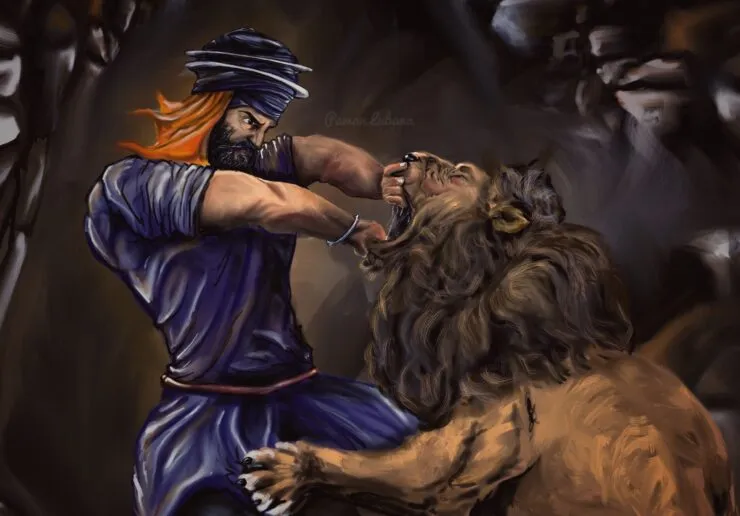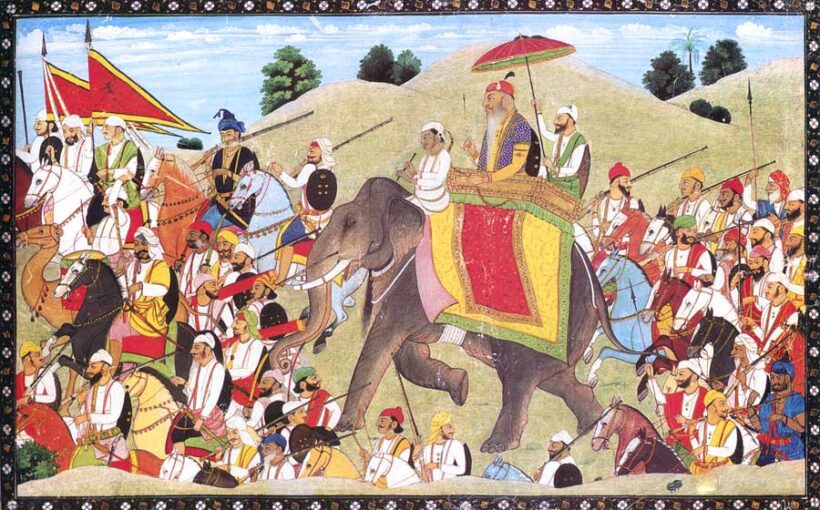Hari Singh Nalwa this name has its own reputation in the land of Afghanistan. Indian history is full of such brave warriors who defeated the undefeated kingdoms and Hari Singh Nalwa is just one part of this.
To this day this great son of Maa Bharti is known as the most feared Sikh warrior. He was the commander in chief of the Khalsa Fauj (army). Throughout his military career, Hari Singh Nalwa fought about 22 battles and came out to be victorious in every single one of them.
Content
Early Life of Hari Singh Nalwa
Born in the year 1791 in Gujranwala (now in Pakistan) of Punjab. When he was only seven years old his father i.e. Gurdial Singh died and the young warrior was then raised by his mother.

Hari Sikh Nalwa
From the beginning of his childhood, Hari Singh Nalwa had a deep interest in horse-riding and other activities. Historians had given huge credit to Hari Singh Nalwa in stopping the Afghan incursion on the Indian subcontinent.
According to the former Guru Nanak Dev University vice-chancellor Dr. S.P.Singh, In Afghan folklore, mothers used to use Nalwa’s name to scare and quieten their unruly children. Hari Singh Nalwa (1791-1837) was one of the most trustworthy commanders in Maharaja Ranjit Singh’s army.
He was the Governor of Kashmir, Hazara, and Peshawar. He defeated Afghans and prevented them from entering the Indian subcontinent through Khyber Pass.
Note: Khyber Pass was the main route of the foreign invaders whether Arabs, Turks, Greeks, etc. to enter India.
Hari Singh Nalwa shot to fame after defeating the Afghans and establishing control over various regions along the boundary of Afghanistan.
He prevented Afghans from entering Punjab through the Khyber Pass, which was the main route that foreign invaders. At the time of his death, the western boundary of the empire was Jamrud.
Note: Maharaja Ranjit Singh fully trusted Hari Singh Nalwa and his military skills.
Rise of Military Career
Hari Singh got the Nalwa title attached to his name after he reportedly killed a tiger at a very young age. He was also called Bagh Maar (Killer of the tiger) for the same reason.
According to folklore, a tiger had attacked him suddenly during one of his hunting expeditions, surprising him and leaving him with no time to pull out his sword. In a last-ditch attempt, he had held the tiger’s jaw pushed the animal back, and then draw out his sword, with which he killed the animal.
Maharaja Ranjit Singh after hearing this incident had reportedly said Wah Mere Raja Nal Wah. In the year 1805 Hari Singh Nalwa received the command of 800 horses (cavalry) and was given the title of SARDAR.
Hari Singh Nalwa against Afghan Warlords
Nalwa had a successful expedition in multiple battles defeating Afghan tribes and king.
Battle of Kasur(1807), Sialkot(1808), Attock(1813), Multan(1818), Shopian(1819), Mangal(1821), Nawshera(1823), Sirikot(1824), Saidu(1827), Peshawar(1837), Jamrud(1837).
These victories expanded the Sikh empire and they also created a huge fear of Nalwa among the Afghans. Hari Singh Nalwa remained in Peshawar to keep an eye on the Afghan-Punjab border.
During the battle of Kasur, Hari Singh Nalwa was only 16 years old. However, after partition, this region is now in Pakistan. In this battle, Nalwa defeated the Afghan hordes under Kutab-du-din Khan.
In the battle of Attock Nalwa along with other commanders defeated Azim Khan and his brother Dost Mohammad Khan. This victory is considered the first major victory of the Sikhs over Afghans.
In 1818 Nalwa defeated the Afghans at the Battle of Peshawar and Nalwa asked to be stationed here. Later in 1837 Nalwa took control over Jamrud a fort at the entryway to Afghanistan through Khyber Pass.
Eminent historians believe that the battle of Jamrud was the last battle of Nalwa. In this battle, Nalwa fought against Dost Muhammad Khan along with his five sons. The Sikhs in this battle were heavily outnumbered (only 600) with limited resources.
Hari Singh Nalwa who was stationed at Peshawar at that time marched towards Jamrud to save the Sikh army which was surrounded by Dost Mohammad troops.

The Afghans had a huge army consisting of 7000 cavalry supported by another 12000 Khaibiris troops along with artillery and matchlocks. Despite having such big support the invasion of the Afghans was repulsed by the handful of Sikhs.
Many historians maintain that if Maharaja Ranjit Singh and his commander Hari Singh Nalwa would have not taken control of Peshwar and the northwest frontier, which is part of Pakistan now, then these areas could have been part of Afghanistan.
Without Nalwa and his counter against Afghani lords, we could have seen more Afghan incursions into Punjab and Delhi. We can only imagine what the regions like Delhi and its neighboring cities would have suffered from.
It was the dauntless efforts of Hari Singh Nalwa who thrashed the invaders every time when the nation needed him the most.
However, whenever we read Indian History we always forget to appreciate the contribution of those who guarded the borders of India till their last breath.
Even in modern times, we knew a handful of names who fought for Maa Bharti from Ancient to Modern times. Rajput, Marathas, or Sikhs we hardly remember the name of those brave warriors who fought for the protection of Indian civilization.
LIKE WHAT WE ARE DOING? DONATE TO DHARMAYUDH
If you support what we are doing and would like to contribute to help us grow and reach more Indians to teach them more about such forgotten historic Indian Heroes and stories, please consider donating any amount. It will help us grow.

